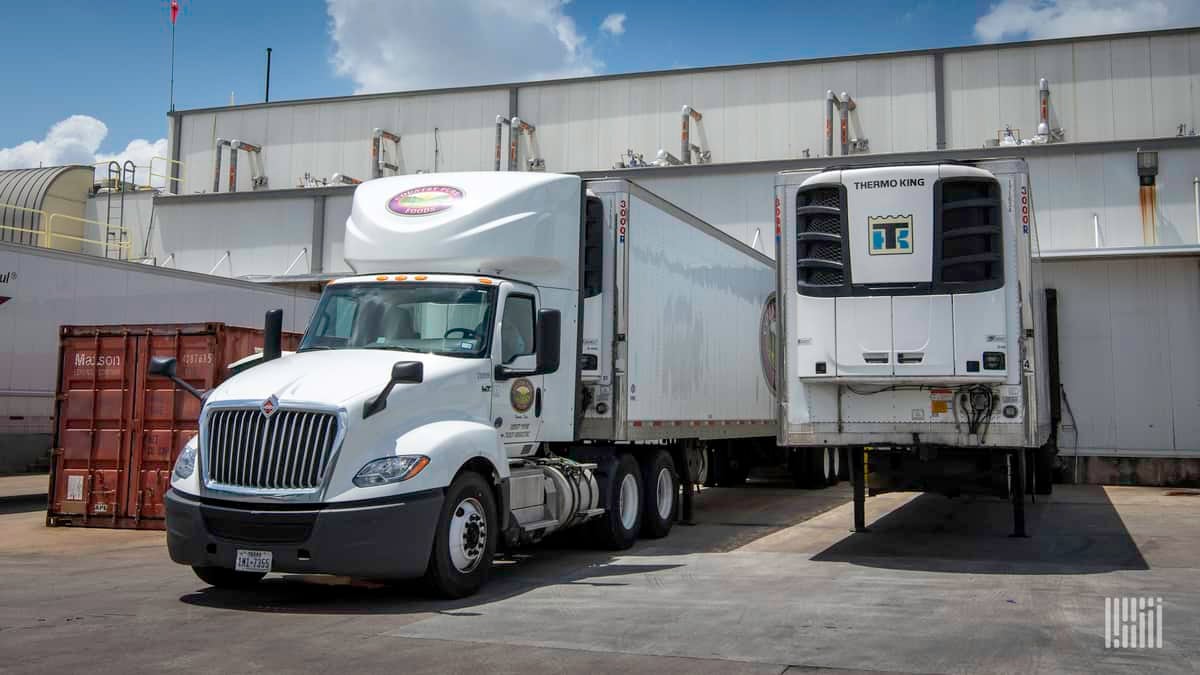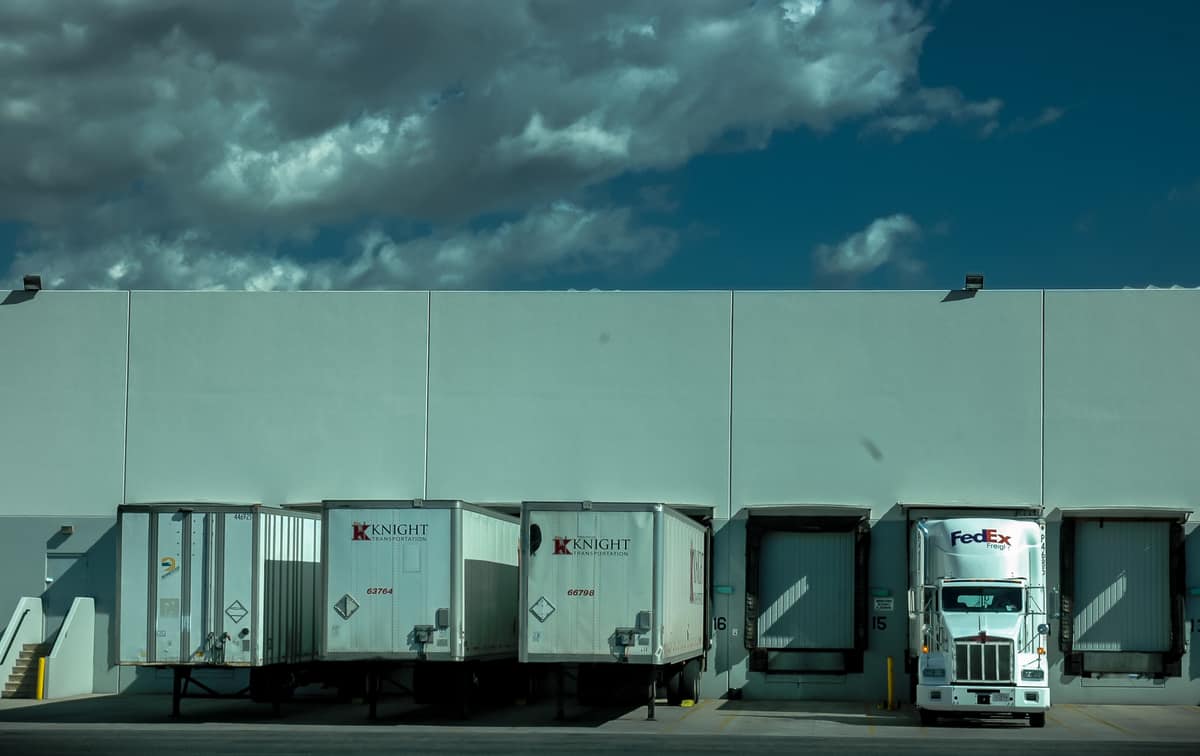warehouse capacity
Loaded and Rolling: Freight market downturn turns 1 year old
It has been just over a year since Craig Fuller, CEO and founder of FreightWaves, wrote an article titled “Why I believe a freight recession is imminent,” published March 31, 2022, in which he predicted the U.S. trucking market was heading toward a significant downturn.
E-commerce platform Cart.com expands US fulfillment footprint
Rapidly growing e-commerce firm Cart.com expanded its fulfillment centers in Tennessee, Ohio, Utah and North Texas.
Amazon cancels or delays plans for at least 16 warehouses this year
With e-commerce growth slowing, did Amazon bite off more than it could chew?
Inventories clog supply chain again in February
Growing e-commerce demand is likely to require higher inventories for timely fulfillment. That means a congested supply chain could become the new norm.
Lack of transportation capacity swells inventories, survey finds
Bottlenecks and a lack of transportation capacity led many retailers to order extra merchandise in the fall. Inventories are now piling up at points along the supply chain for some companies because they still can’t find the transportation to move the goods, a supply chain survey finds.
Brookfield partner Elion adds 1.2 million square feet of warehouse space
Miami-based Elion is adding 10 last-mile logistics assets in a $245 million deal.
Historic year continues for commercial real estate sales
Commercial real estate sales continued to boom in 2021, with prices up 27.4% on a year-over-year basis in November.
Transportation, warehouse capacity lacking, costs soar in November
Growth throughout the supply chain accelerated in November with costs reaching all-time highs, according to the Logistics Managers’ Index.
Just in case: Port crisis could alter logistics landscape forever
Even as container ship backlogs ease, the ripple effects will continue to pressure logistics operators, hampering their ability to move goods through supply chains.
Blackstone group acquires 17.4 million square feet of warehouse space
In its latest logistics bid, Blackstone Group is buying 124 logistics properties in the U.S. and Europe.
Transportation capacity falls further and faster in October
An October supply chain survey shows transportation capacity falling at a faster pace while freight rates keep stepping higher.
Transportation capacity declines accelerate in September
Transportation capacity continues to contract at a record pace with rates climbing to historical levels, according to the September Logistics Managers’ Index.
Why are supply chains so messed up?
Craig Fuller explains why supply chains are so messed up!
DOT opens probe into container, chassis shortages
The Department of Transportation seeks “practical solutions” from the freight industry to alleviate container shortages and supply chain chokepoints.
Transportation capacity dips further, prices keep surging
The supply chain continues to be stretched as the peak shipping season bears down. Capacity declines further while rates soar, according to an August survey.
Transportation capacity tightens further in May
Growth rates throughout the supply chain cooled in May from recent record highs. However, the latest reading on transportation capacity stepped lower again.
Will rising warehouse and inventory costs feed trucking demand?
In 2019 shippers crammed warehouses full of inventory coinciding with a stagnant freight market. As warehousing capacity tightens, could this contribute to the already tight transportation space?
Cloud supply chain firm STORD lands $65M funding round
STORD, which describes itself as a cloud supply chain company, has secured a $65 million funding round as it seeks to expand upon its logistics capabilities.
Transportation caving under weight of inventory
The January Logistics Managers’ Index moves higher as more firms take on inventory and delays throughout the supply chain further deplete transportation and warehouse capacity.
Transportation capacity loosens modestly in December, rates remain elevated
While the pace of growth in the supply chain cooled during December, transportation and warehouse capacity remains tight and prices are high.
Holidays exacerbate the need for telematics
Buying online and picking up in store puts massive pressure on redistribution centers.
Transportation capacity tightens further, pricing climbs higher
A November supply chain survey shows the rates at which transportation capacity is shrinking and pricing is climbing are increasing.
Declines in transportation capacity slow in October
A survey of supply chain executives shows transportation capacity declines at a slower pace in October. The logistics industry continues to experience “rapid” growth.
Transportation capacity hits new lows, ‘no relief in sight’ for pricing
Transportation capacity has dropped to new lows and the precipitous rate at which pricing is increasing is expected to continue for at least the next 12 months, according to a September supply chain survey.
Transportation capacity near 2-year low; pricing surges
July supply chain survey confirms torrid pace of logistics recovery as transportation capacity remains in short supply and rates bound higher.
How long will the bull run?
Joined by special guest Zac Rogers, Anthony and Zach discuss the current freight market’s propensity to overachieve over the past few months and explore reasons why that will persist or crumble.
Supply chain shuffle keeps capacity tight
Companies are cramming warehouses full of freight as they change their supply chains to better suit the post COVID-19 world. Trucking capacity tightens as a result.
No Vacancy
Anthony and Zach talk about the impact of Roadcheck week on the freight market and bring on Zac Rogers to discuss the latest Logistics Manager’s Index results showing increasing transportation prices along with declining warehouse capacity, a pattern eerily similar to 2018.
Perspectives Throughout the Industry
Zach and Anthony go over the latest economic trends within the freight industry and bring on special guest, Zac Rogers to breakdown the Logistics Managers Index and his analysis of how the COVID-19 pandemic is effecting the industry.
[Video included] Is the freight market starting to recover?
Truckload volumes on a national basis have been trending 3% above 2018 levels for a week.





































